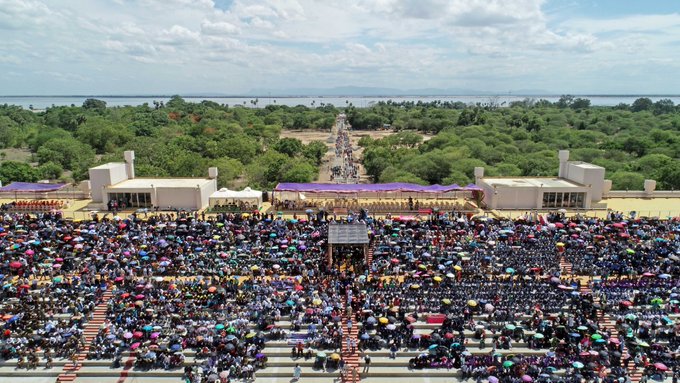Chandigarh, July 16
India on Friday launched its ambitious third lunar mission Chandrayaan 3, eyeing a rare feat in moon exploration so far only accomplished by the likes of the US, China and the former Soviet Union.
Indian Space Research Organisation’s third lunar expedition in 15 years, the hugely anticipated Chandrayaan 3 embarked on its month-long journey towards the moon, piggybacking on ISRO’s latest heavy lift launch vehicle, ‘Fat boy’ LVM3-M4 from the spaceport here.

As the 25 and a half hour countdown concluded, the LVM3-M4 rocket (formerly GSLVMkIII) also dubbed as ‘Fat boy’ for its heavylift capability, soared off majestically from the spaceport at the prefixed time of 2.35 pm from the second launch pad, leaving a trail of thick orange smoke.
Thousands of spectators, who had assembled at Sriharikota to watch the launch since morning, broke into loud cheers and applauded as the launch vehicle soared into clear skies.
Meanwhile, the launch was also watched by millions of enthusiastic spectators on television and social media.
However, now a unique video of the launch has emerged which was caught on camera from a plane window that was flying from Chennai to Dhaka. The video was shared on Twitter by Dr PV Venkitakrishnan, Director (retired), ISRO Materials, and Rocket Manufacturing Expert
He captioned the visuals as, “Launch of Chandrayan 3 from flight. Sometime after takeoff from Chennai to Dhaka flight, pilot announced to watch this historical event.”
Since being shared, the video has received lakhs of views and countless likes.
About 16 minutes after lift-off, Chandrayaan 3 got separated from the rocket and it would orbit the earth for about 5-6 times in an elliptical cycle with 170 km closest and 36,500 km farthest from earth moving towards the lunar orbit.
The LVM3 rocket is a composite of three modules — propulsion, lander and rover (which is housed inside the lander).
Following the separation from the launch vehicle, the propulsion module along with the lander would proceed for an over a month long journey towards reaching the orbit of the moon until it goes 100 km above the lunar surface.
After reaching the desired altitude, the lander module would begin its descent for a soft landing on the moon’s south pole region. This key action is expected to take place by August 23 or 24, scientists at ISRO said.
The mission is expected to be supportive to future interplanetary missions. (With Agency Inputs)
